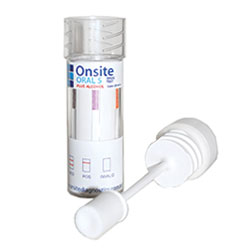The new Standard
AS/NZS 4760:2019: Procedure for specimen collection and the detection and quantification of drugs in oral fluid
What are the changes?
Australian Standards were updated on the 11th of March 2019. The changes include new cut-off levels for THC (Marijuana/Cannabis), the addition of oxycodone as a mandatory test, and changes to chain of custody (CoC) documentation.
Changes to cut-off levels for THC (Marijuana/Cannabis)
AS/NZS 4760:2006 has the cut-off level for THC (Marijuana/Cannabis) as 25ng/mL. Anything over this level is considered a “non-negative” result for THC. The new cut-off level in AS/NZS 4760:2019 is much lower at 15ng/mL. Where a non-negative result for THC is provided, the sample is sent to a NATA accredited laboratory for confirmatory testing. This confirmatory testing had a cut off of 10ng/mL, which has also been lowered to 5ng/mL as in accordance with the new Standard (AS/NZS 4760:2019).
Testing for Oxycodone
Testing for oxycodone was not required in a saliva drug test under the old Standard. Under the new Standard AS/NZS 4760:2019, all samples must now be tested for oxycodone. Oxycodone is a strong pain relief drug that is available by prescription only. Sold under the brand OxyContin, Oxycodone it is an opioid medication. AS4760:2019 has a cut-off level of 40ng/mL for oxycodone.
Chain of Custody (CoC) Form Changes
Changes have also occurred with Chain of Custody (CoC) forms. These changes include the requirement of additional consent from the donor in relation to privacy and dispute resolution. The new CoC forms address the reason for drug testing and recording the information on the specimen device provided to the laboratory. In addition, it will also be considered a ‘fatal error’ if there is any missing or incorrect information on the CoC form. Fatal errors cannot be rectified and include the incorrect name or ID, wrongly labelled specimens, and/or an incomplete form. A fatal error on a CoC form means that the specimen cannot be relied upon in a Court of Law.










